English to Dutch translation: Automate localization for
Benelux markets
Transform your content for Dutch-speaking audiences with AI that understands cultural nuances across Dutch-speaking markets. Transifex delivers context-aware English to Dutch translations that maintain your brand voice and messaging.
Book your 30-min demo

Book your 30-min demo

Reach 25+ million Dutch speakers with enterprise-grade localization
Dutch is a West Germanic language spoken by over 25 million people worldwide and drives two of Europe's most prosperous economies. Whether you're targeting the Netherlands' 17 million consumers, Belgium's Flemish region with 6.5 million Dutch speakers, or expanding to Suriname and Caribbean territories, quality English-to-Dutch translation directly impacts your market penetration and revenue growth in Dutch-speaking countries.
Why English-to-Dutch translation is challenging
Converting English content to Dutch involves complex linguistic structures, regional variants, and cultural nuances that can significantly impact your message effectiveness in Dutch-speaking markets.
Here's what makes professional Dutch translation challenging:
Complex linguistic structures
Dutch compound words can be extremely long, such as "Kindercarnavalsoptochtvoorbereidingswerkzaamhedenplan." Translations are often 20 to 35 percent longer than English, creating layout challenges. Formal "u" versus informal "je" changes tone, while diminutives and compounds complicate accuracy.
Regional market differences
Standard Dutch is used in the Netherlands, where English proficiency is high but native content is preferred. Flemish Dutch in Belgium uses different vocabulary, such as "schoonbroer" versus "zwager," and Caribbean Dutch requires unique adaptations. Business etiquette also varies between the Netherlands and Belgium.
Cultural adaptation requirements
Dutch consumers value authentic local content despite strong English skills. Quality and precision expectations are high, and formality differs by region, with informal "je" common in the Netherlands and formal "u" favored in Belgium. Compound words also affect design and UX.
Technical localization hurdles
Text expansion impacts websites, mobile apps, and software layouts. SEO requires careful adaptation for Dutch search engines, while legal, currency, and date format requirements vary between Dutch-speaking regions.

Transifex is loved by leading organizations worldwide
Instant English to Dutch translation with Transifex
Whether you manage localization projects, develop software, or run marketing campaigns targeting Dutch-speaking markets, Transifex streamlines your English to Dutch translation workflow without compromising quality or cultural authenticity.
Here's what makes the difference:
AI tailored to any Dutch language variant
Transifex AI recognizes Standard Dutch (nl_NL), Belgian Dutch (nl_BE), and Caribbean variants following ISO 639-1 and BCP 47 standards. The system automatically adapts vocabulary, formality levels, and cultural references based on your target market—using "mobiele telefoon" for the Netherlands while adapting to "gsm" in Belgium automatically.
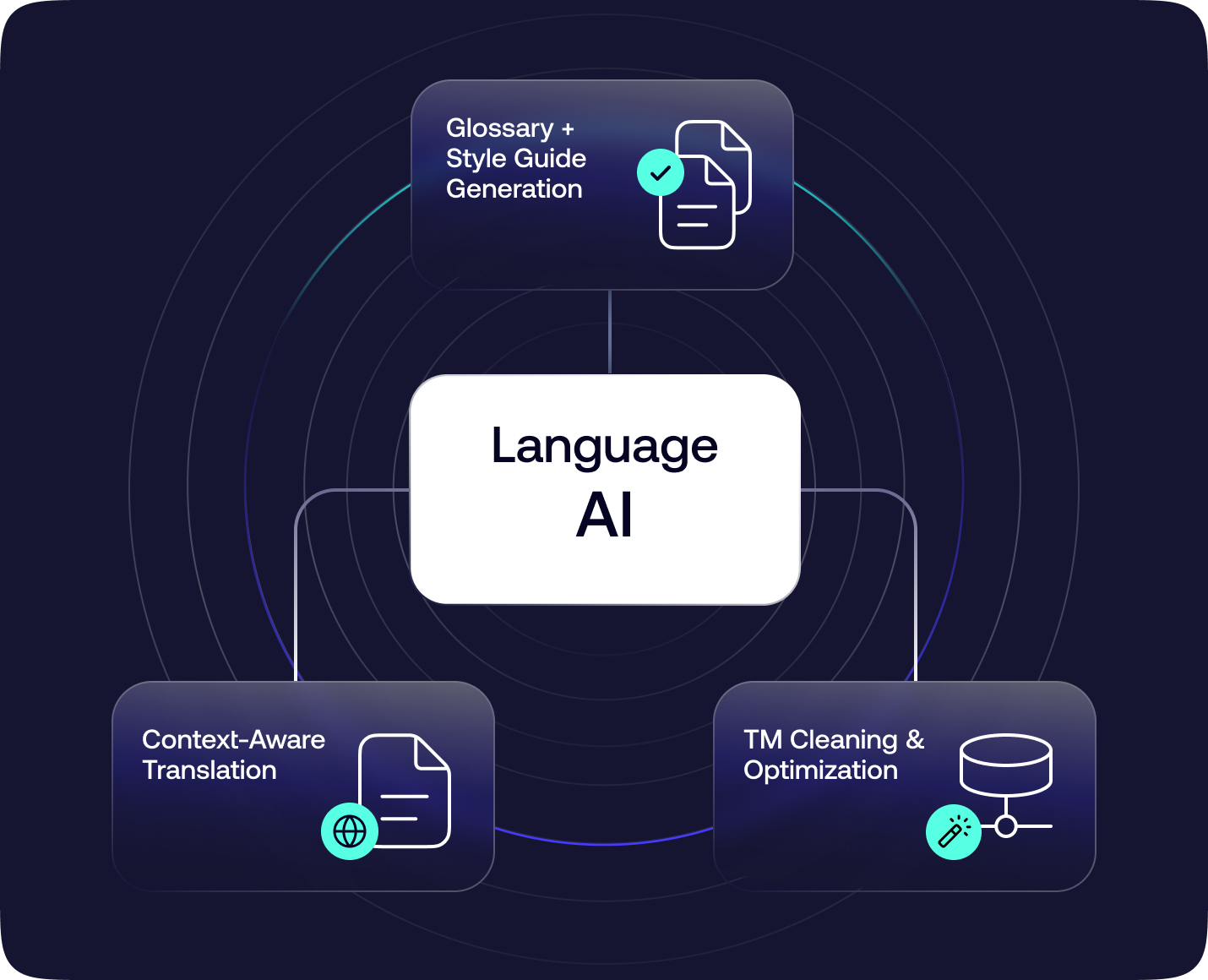
Translation Memory built for Dutch complexity
Every approved Dutch translation builds your terminology database using ISO/IEC 15897 standards for locale handling. When you translate "customer support" once as "klantenservice," the system suggests it consistently across all Dutch variants while respecting regional differences. Fuzzy matching identifies similar compound words to accelerate translations while maintaining linguistic consistency.
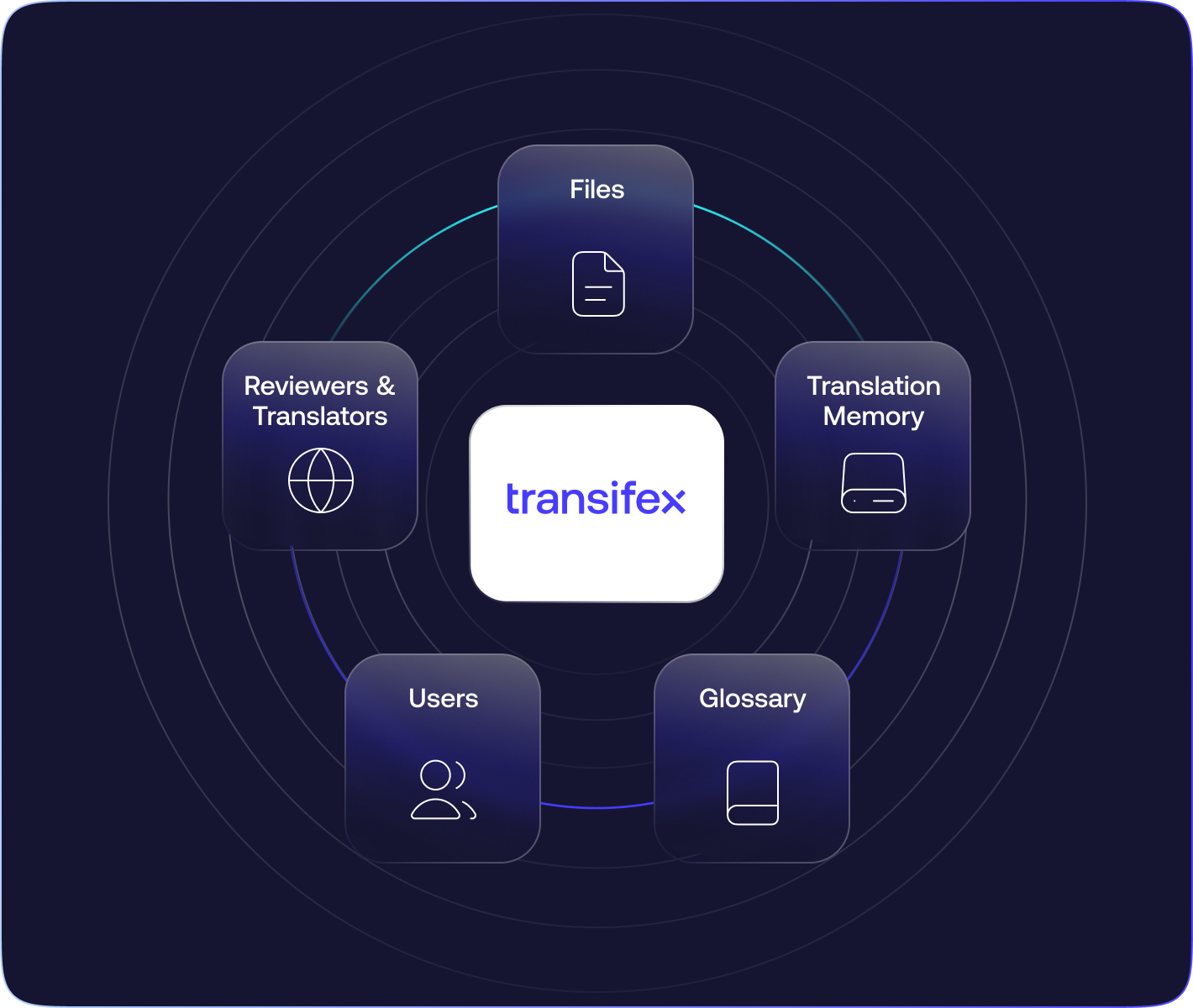
Quality scores you can trust
TQI (Translation Quality Index) automatically evaluates every Dutch translation using three metrics: consistency across language models, structural integrity preserving HTML tags and compound word structures, and semantic accuracy. Set thresholds to auto-approve high-quality translations (85%+) while flagging complex Dutch grammar issues for human review.
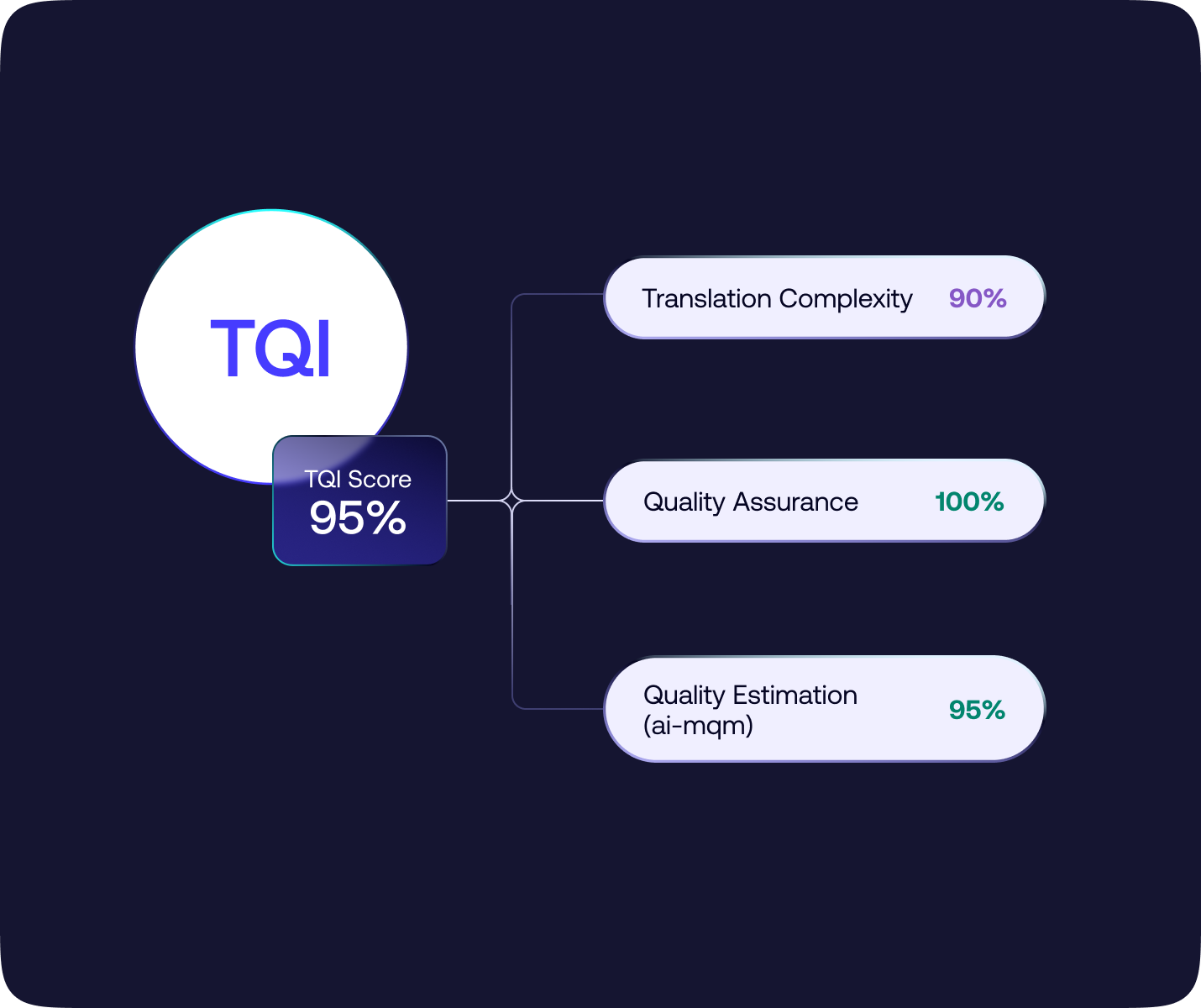
Live website translation
Install one JavaScript snippet and translate your website directly in the browser. See exactly how Dutch text expansion affects buttons, menus, and content areas in real-time. Changes go live immediately without developer involvement—perfect for marketing campaigns targeting Dutch-speaking markets across Netherlands and Belgium.
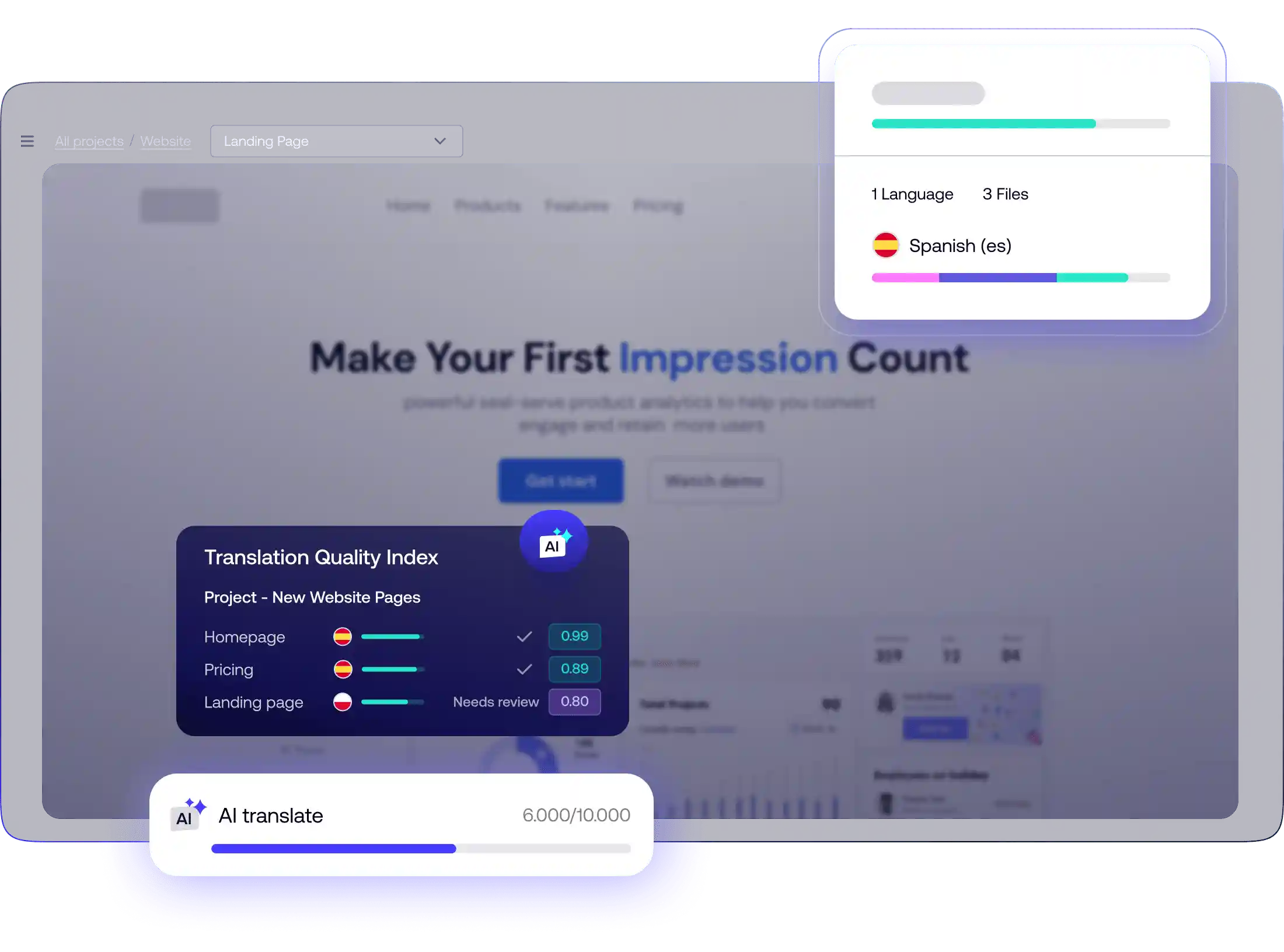




AI translation that overcomes Dutch language complexity
Transifex supports over 450 language locales following ISO 639-1 standards, including distinct Dutch variants like nl_NL (Netherlands), nl_BE (Belgium), nl_SR (Suriname), and regional Caribbean territories. The AI recognizes when to use "computer" vs "rekenaar" for computer, or "parkeren" vs "parkeren" depending on your specific Dutch market.
Transifex features designed for Dutch localization excellence:
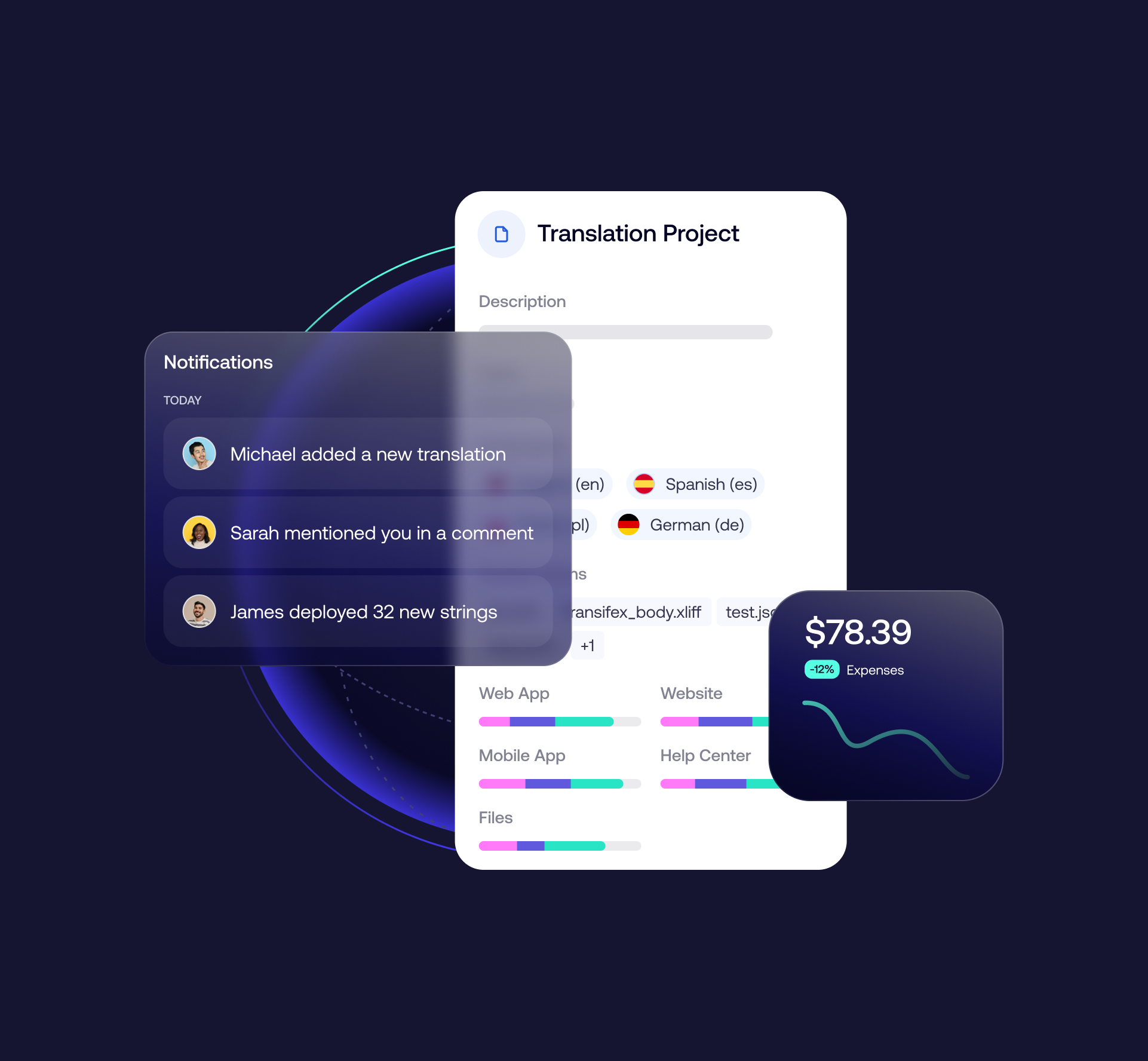
Complete project management
Set up automated workflows for Dutch translation projects using Unicode CLDR data for proper pluralization handling. Configure TM fill-up to instantly apply 100% matches from your Dutch translation memory. Enable AI fill-up to translate new content automatically while respecting Dutch compound word formation and text expansion requirements. Assign roles to certified Dutch translators, reviewers, and project managers with appropriate permissions for different Dutch-speaking markets.
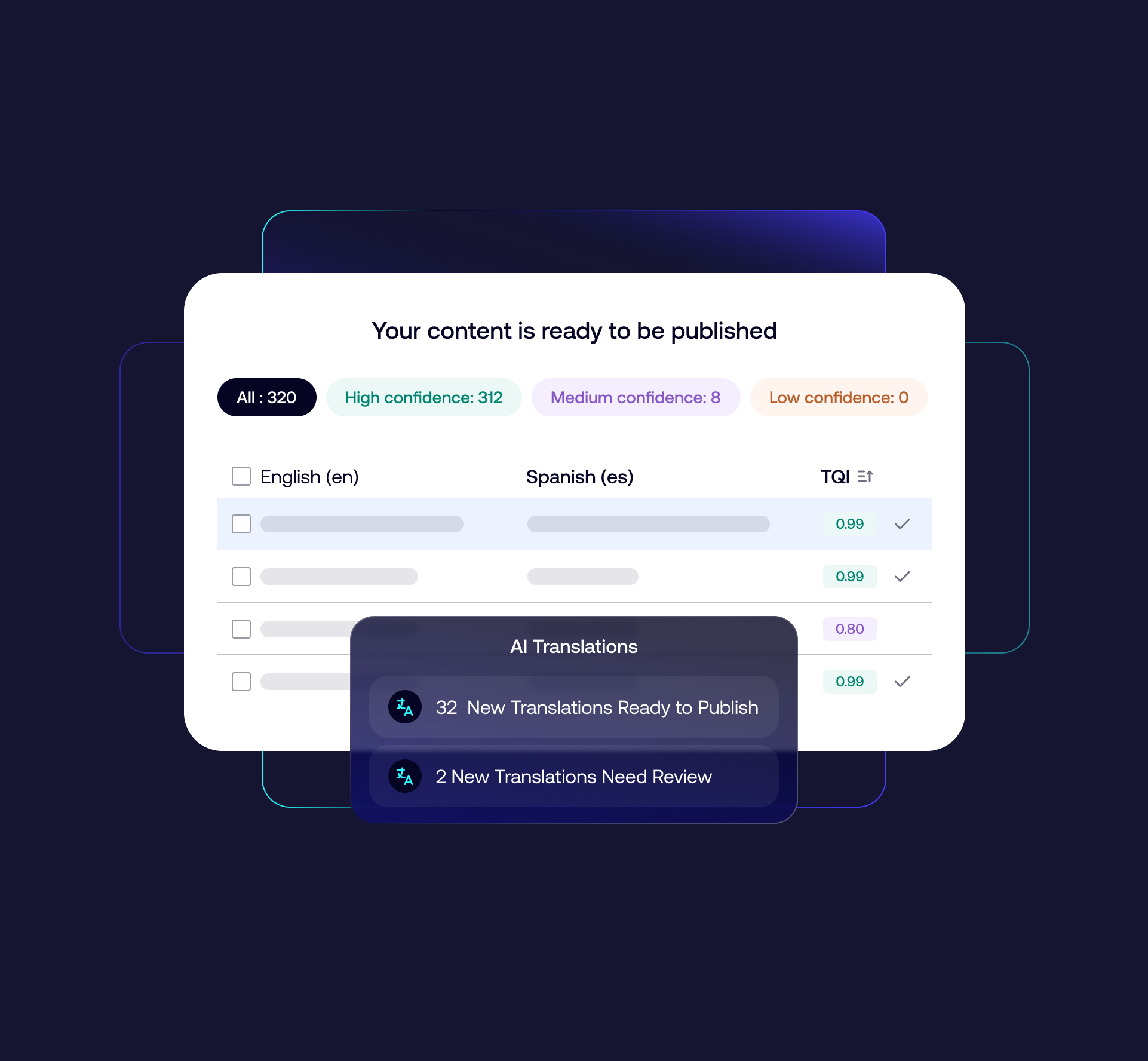
Context-aware AI translation
The system analyzes your Dutch glossary for consistent terminology, references high-similarity translation memory entries, and follows your Dutch style guide instructions. Whether you need formal business Dutch for Netherlands B2B documents or informal Dutch for Belgian consumer marketing, the AI adapts accordingly while maintaining brand consistency across Dutch-speaking regions.
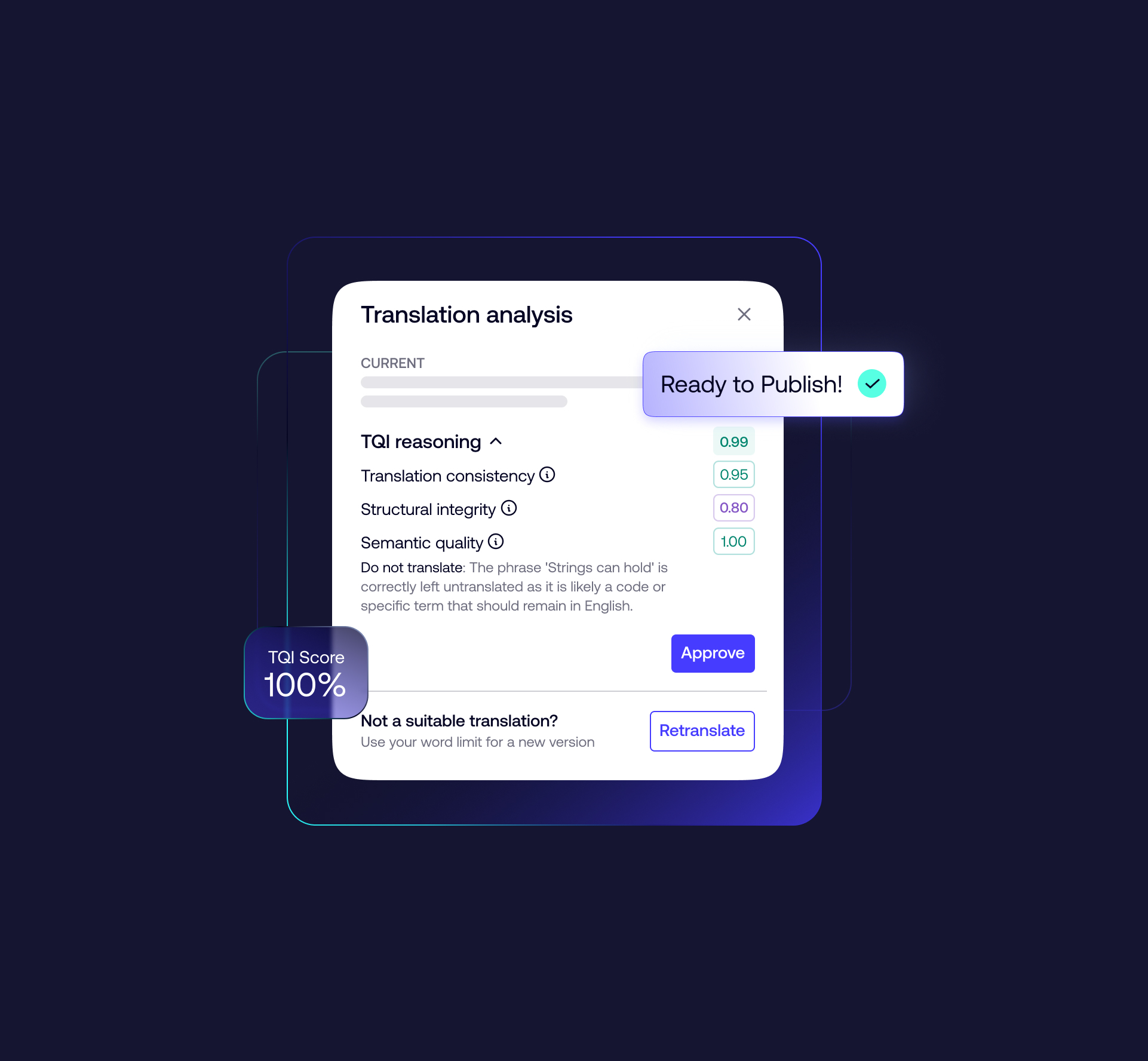
Automated quality control
TQI identifies specific issues like Dutch grammar inconsistencies, compound word formation errors, or cultural appropriateness concerns for different Dutch markets. Configure workflows to auto-approve high-scoring translations (85%+), route medium-scoring content for quick review by native Dutch speakers, and flag low-scoring translations for comprehensive revision. Track quality trends to improve future Dutch translations.
Built for product, marketing, and localization teams alike
Marketing Managers
Launch Dutch campaigns faster
Create localized Dutch content that matches your brand voice across Netherlands, Belgium, and Caribbean Dutch markets. With context-aware translations, marketing teams can move fast, stay consistent, and never miss a campaign window targeting Dutch-speaking audiences—no dev help required.
Developers
Dutch localization built for agile teams
Take Dutch localization off your backlog with a platform built for high-frequency content updates. Seamlessly integrate into your CI/CD workflow using our extensive API, SDKs, and CLI tools with full ISO standard compliance for Dutch locale handling.
Product Teams
Launch multilingual products faster
Accelerate product launches with automated Dutch localization. Integrate seamlessly into your development workflow and ensure your applications speak every Dutch dialect from day one with proper locale handling for Netherlands, Belgium, and Caribbean territories.
Localization Managers
More efficiency, more localized Dutch content
Localize more Dutch content with less effort on an all-in-one platform. Bring all stakeholders together, streamline collaboration, and deliver authentic, on-brand Dutch translations efficiently for every Dutch-speaking market while maintaining ISO 17100:2015 quality standards.
The only localization platform with native support for over 46 different content types
Translate any type of English content into Dutch—no conversions or plugins needed.
Web and
mobile UI
YAML (.yaml/.yml), JSON (including structured JSON), Gettext PO/POT, Android XML, Apple .strings / .stringsdict—handles Dutch text expansion automatically
Technical documentation
Markdown (.md / .mdx), Wiki markup (.wiki), XLIFF (.xliff/.xlf/.xml)—perfect for Dutch technical manuals
Marketing
assets
PowerPoint (.pptx), HTML / XHTML, Landing pages—manages Dutch compound word formatting automatically
Fileless (API-based content)
Phrase-based localization from APIs, Figma plugin, HubSpot—uses ICU syntax, supports Dutch metadata, and exports as JSON or XLIFF
Business and legal documents
Microsoft Word (.docx), Excel (.xlsx/.xlsm/.xltx/.xltm), PDF (via conversion)—ideal for Dutch legal compliance
Subtitles and video captions
SubRip (.srt), SubViewer (.sub), YouTube captions (.sbv), WebVTT (.vtt)—translated in-context with built-in editor preview for Dutch voice-over projects

Automate Dutch localization—without any bottlenecks
Transifex helps you translate English to Dutch with speed, precision, and automation—all while maintaining brand consistency and cutting manual work.
Launch new content, reach Dutch-speaking markets, and scale your multilingual strategy with confidence across Netherlands, Belgium, and global Dutch communities.
Frequently asked English to Dutch questions
Still got questions? Talk with the Transifex team to see how you can improve the quality of your Dutch translations and save money.
How many people speak Dutch globally?
Dutch is spoken by approximately 25+ million people worldwide as a native language. The Netherlands accounts for 17 million speakers, Belgium has 6.5 million Dutch speakers in Flanders, and Suriname has 400,000+ speakers, with smaller communities in Caribbean territories and diaspora populations globally.
What's the difference between Dutch and Flemish?
Dutch and Flemish are the same language with regional variations. Standard Dutch is used in the Netherlands, while Belgian Dutch (often called Flemish) has distinct vocabulary and pronunciation. For example, "schoonbroer" (Flemish) vs "zwager" (Dutch) both mean brother-in-law, but are used in different regions.
Why is Dutch important for European business expansion?
Dutch represents access to two of Europe's wealthiest economies—the Netherlands ranks among the world's top 10 exporting nations with a GDP exceeding €900 billion, while Belgium's Flemish region drives significant EU commerce. Dutch is also an official EU language, making it strategic for European market penetration.
How does Transifex handle Dutch text expansion and compound words?
Transifex AI understands Dutch compound word formation and automatically handles text expansion challenges. The platform recognizes that Dutch translations typically run 20-35% longer than English and alerts designers to layout adjustments needed for proper UI/UX display.
What industries benefit most from English to Dutch translation?
Technology, logistics, manufacturing, agriculture, and financial services see significant benefits from Dutch localization. The Netherlands leads in innovation and international trade, while Belgium's Flemish region excels in pharmaceuticals and manufacturing, creating opportunities across B2B software localization and technical documentation.
Can Transifex handle certified Dutch translations for official use?
Transifex supports professional Dutch translation workflows that meet ISO 17100:2015 standards. Our platform enables certified Dutch translators to work with legal documents, business contracts, and official documents while maintaining consistency and accuracy for Dutch regulatory compliance.
How long does English to Dutch translation take with Transifex?
Translation speed depends on content volume and complexity. Transifex AI provides instant Dutch translations with TQI quality scoring, while human review processes can be automated based on quality thresholds. Most projects see 70% faster completion times compared to traditional workflows while maintaining native-level quality.
Learn more about scaling your software localization efforts
Software localization is more than the translation of your product UI. Different language settings, plural forms, frameworks used and visual relevancy factors are only a few other things to consider.




